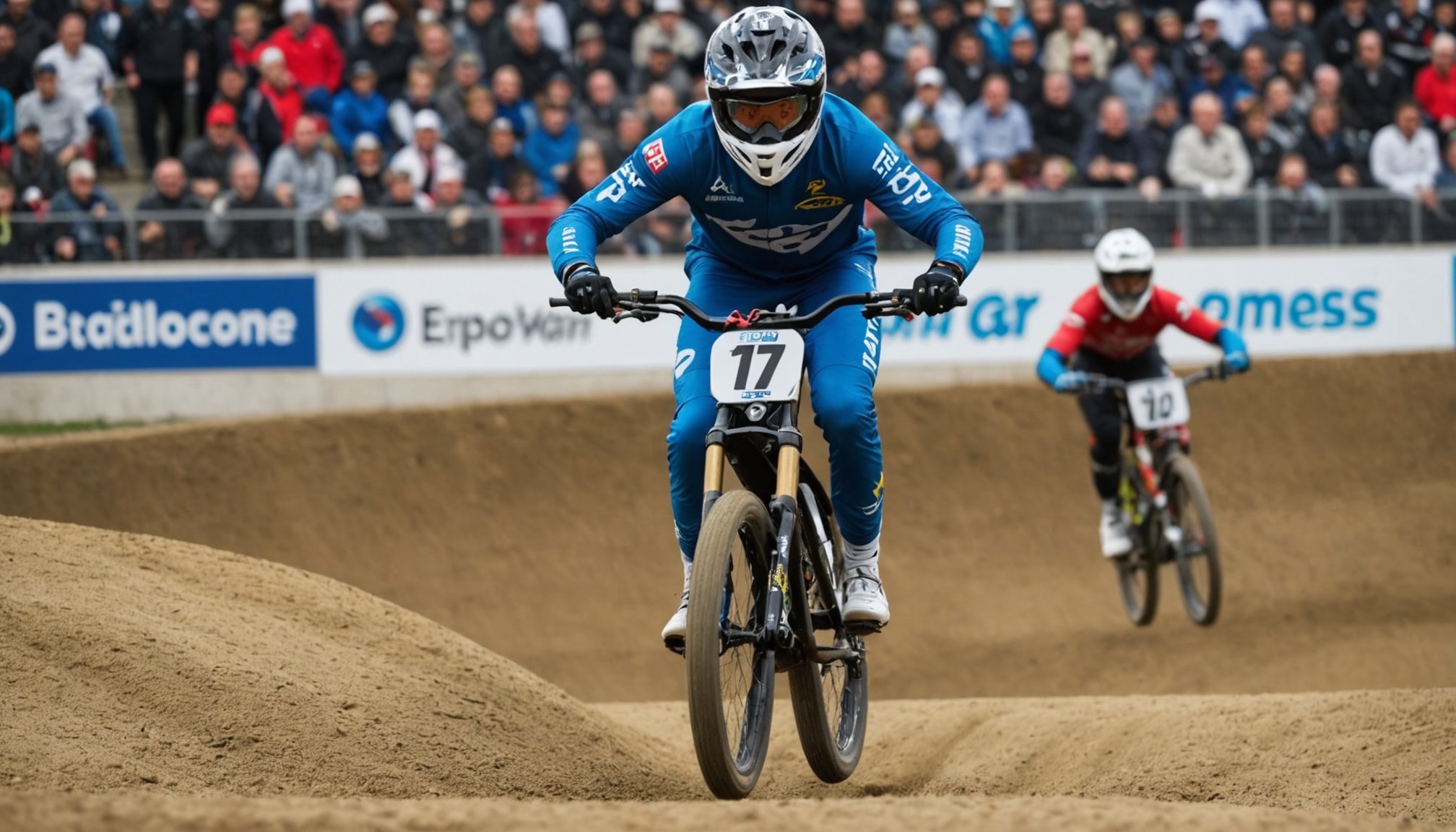Unlocking BMX Success: Harnessing Video Analysis to Boost Your Racing Tactics
The Power of Video Analysis in BMX Racing
In the fast-paced world of BMX racing, every fraction of a second counts, and the margin between victory and defeat can be incredibly slim. One of the most effective tools in a rider’s arsenal for improving performance is video analysis. This technique, widely used in various sports, allows riders to dissect their rides, identify areas for improvement, and refine their racing tactics.
How Video Analysis Works
Video analysis involves recording a rider’s performance, either during a race or a training session, and then reviewing the footage to analyze various aspects of their riding. This can include:
In parallel : Conquering mid-race fatigue: key mental strategies every triathlete should know
- Technique: Examining the rider’s body position, pedaling technique, and how they navigate different sections of the track.
- Speed and Timing: Analyzing the rider’s speed at different points on the track and comparing it to competitors or previous performances.
- Strategy: Identifying optimal lines, braking points, and acceleration zones.
- Mental Preparation: Observing how the rider handles pressure and stress during the race.
Here’s what Dylan Johnson, a professional cyclist, has to say about the importance of detailed analysis in training:
“Using tools like exert to estimate my FTP and analyzing my power output during specific workouts has been crucial. For example, during the Unbound 200, I was able to maintain a normalized power of 283 watts for over 9 hours, which was a direct result of my detailed training and analysis”[1].
Also to read : Elevate your archery game: the role of yoga in boosting strength and flexibility for competitive archers
Building a Comprehensive Video Analysis Program
To effectively harness video analysis for BMX success, you need a structured approach. Here’s a step-by-step guide to building your program:
Equipment and Software
- High-Quality Cameras: Use cameras that can capture high-frame-rate footage, such as GoPros or similar action cameras.
- Analysis Software: Utilize software like Dartfish, Hudl, or even basic video editing tools to slow down, speed up, and annotate the footage.
Recording Your Rides
- Multiple Angles: Record your rides from different angles, including front, rear, and side views, to get a comprehensive view of your technique.
- Track Sections: Focus on specific sections of the track where you struggle or want to improve.
Analyzing the Footage
- Slow Motion Review: Slow down the footage to analyze fine details such as pedaling technique, body position, and braking points.
- Comparison: Compare your performance with that of other riders, either competitors or professional riders.
Here is a detailed list of steps to follow during the analysis:
- Identify Key Sections: Pinpoint critical parts of the track where improvements can be made.
- Analyze Technique: Look at your body position, pedaling cadence, and how you handle jumps and turns.
- Measure Performance: Use software to measure your speed, acceleration, and braking times.
- Develop Strategies: Based on the analysis, develop strategies for improving your performance in those key sections.
- Practice and Refine: Practice the new strategies and refine them based on subsequent video analyses.
Case Study: Applying Video Analysis in Real-World BMX Racing
Let’s take a look at a hypothetical case study to illustrate how video analysis can be applied in real-world BMX racing.
Rider Profile
Meet Alex, a young BMX rider aiming to improve his performance in local and national competitions. Alex has been riding for several years but feels he has plateaued and needs a new approach to boost his racing tactics.
The Process
- Recording the Ride:
- Alex records his rides using a GoPro attached to his helmet and another camera placed at the side of the track.
- He focuses on recording specific sections of the track where he struggles, such as a particularly challenging jump or turn.
- Initial Analysis:
- Alex reviews the footage in slow motion, paying close attention to his body position during jumps and turns.
- He notices that he tends to lean forward too much during jumps, which affects his landing and subsequent acceleration.
- Strategy Development:
- Based on the analysis, Alex develops a new strategy for approaching jumps. He practices keeping his body more centered and using his arms for better balance.
- He also identifies a faster line through a critical turn, which he had not noticed before.
- Practice and Refinement:
- Alex practices the new strategies during his training sessions and records these sessions for further analysis.
- He refines his technique based on the feedback from the video analysis, making adjustments as needed.
Integrating Video Analysis into Your Training Programs
Video analysis is not just a one-time tool but an ongoing part of your training program. Here’s how you can integrate it into your regular training:
Regular Review Sessions
- Weekly Reviews: Set aside time each week to review your rides and analyze your performance.
- Monthly Deep Dives: Once a month, do a more in-depth analysis, comparing your current performance with previous months to track progress.
Combining with Other Training Tools
- Power Metrics: Use tools like power meters and heart rate monitors in conjunction with video analysis to get a complete picture of your performance.
- Mental Preparation: Use video analysis to observe how you handle pressure and stress, and develop mental preparation strategies accordingly.
Here’s an example of how Pete Roggeman from NSMB combines different tools for his training:
“I’m going to make a concerted effort to make journal entries and photos about 10 memorable rides this year. I’ll also make at least 5 videos documenting trails, which will help me learn about shooting riding videos and keep me accountable”[2].
The Role of Digital Community and Social Media in BMX Success
In today’s digital age, leveraging social media and online communities can significantly enhance your BMX success.
Sharing Your Progress
- Blog Posts and Articles: Write about your experiences, tips, and strategies on your blog or contribute to cycling blogs.
- Social Media Updates: Share your progress, tips, and insights on social media platforms like Instagram, YouTube, and Facebook.
Learning from Others
- Podcasts and Videos: Follow BMX-related podcasts and YouTube channels to learn from other riders and coaches.
- Online Forums: Participate in online forums and communities to share knowledge and learn from others.
Here’s how social media can be a powerful tool for your BMX journey:
“Social media is not just about marketing your brand; it’s about building a community. By sharing your journey, you can inspire others and get valuable feedback and support,” says Emma Le Rossignol from NSMB[2].
Table: Comparing Different Video Analysis Tools
Here’s a comparative table of some popular video analysis tools that you can use for BMX racing:
| Tool | Key Features | Cost | User Level |
|---|---|---|---|
| Dartfish | Advanced annotation tools, slow-motion review, side-by-side comparison | Subscription | Advanced |
| Hudl | User-friendly interface, cloud storage, collaboration tools | Subscription | Intermediate |
| Adobe Premiere Pro | Professional video editing software, advanced annotation tools | One-time purchase | Advanced |
| iMovie | Basic video editing software, easy to use | Free | Beginner |
| Kinovea | Free and open-source, basic annotation tools | Free | Beginner |
Practical Insights and Actionable Advice
Here are some practical tips to help you get the most out of video analysis for your BMX racing:
Start Small
- Begin with basic analysis tools and gradually move to more advanced software as you become more comfortable.
Be Consistent
- Make video analysis a regular part of your training routine, whether it’s weekly or monthly.
Focus on Key Areas
- Identify the most critical sections of the track and focus your analysis on those areas.
Seek Feedback
- Share your analysis with coaches or experienced riders to get additional feedback and insights.
As ShawMac from NSMB puts it:
“Ride more, drive less. It’s about making small changes that add up over time. Similarly, with video analysis, it’s about making small adjustments that can significantly improve your performance”[2].
Unlocking BMX success through video analysis is a powerful strategy that can significantly boost your racing tactics. By integrating video analysis into your training programs, leveraging digital communities, and using the right tools, you can gain a competitive edge and achieve long-term success in the sport.
Remember, success in BMX racing isn’t just about physical training; it’s also about mental preparation and strategic planning. By harnessing the power of video analysis, you can refine your technique, develop better strategies, and ultimately enhance your performance on the track.
So, the next time you’re out on the track, don’t just ride – analyze, adjust, and keep pushing forward. Your BMX success is just a video away.
















